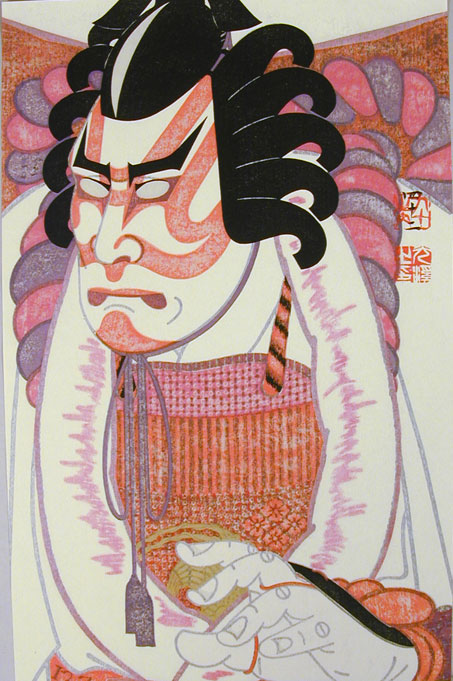Celebrating the 30th anniversary of this contemporary artist’s first solo show—held at PAM in spring 1989—it displays 77 prints by this artist widely celebrated as one of Japan’s leading contemporary print artists. The British Museum lauded Kōkei for producing Japan’s “most notable Kabuki prints” in the post-war era.
Known for his bold, even disturbing, portraits of Japan’s leading actors in a dynamic theatrical form, Kōkei responds to the idiosyncratic late-18th century kabuki prints by the great Sharaku. A master in his own right, Kōkei captures the intense color, movement and emotion of kabuki. Yet Kōkei diverges from tradition by designing, carving and printing his own work. Because he uses extremely delicate paper, his works juxtapose emotionally dynamic images with fragile materials to create objects of extraordinary power.
The exhibition presents all of Kōkei’s actor prints from 1984-1993. Because the artist limited his editions, such a complete collection is unprecedented. To explore the broader contours of Kabuki actor prints, Kōkei’s work contextualized by actor prints by Sharaku as well as two-dozen by contemporary Japanese and western artists. This comparative material is loaned from a leading private collection of modern Kabuki portraits.
The exhibition utilizes the complex issues of identity in Kabuki—where actors take on multiple roles and males take on female roles—to explore broader questions of self definition and its representation. It includes several Kōkei’s emotionally torqued self-portraits produced after he gave up actor prints in 2000. It concludes by examining how kabuki actor imagery has inspired pop images over the last 20 years, demonstrating the productive link between Japan’s historic ukiyo (floating world) and our own culture.
